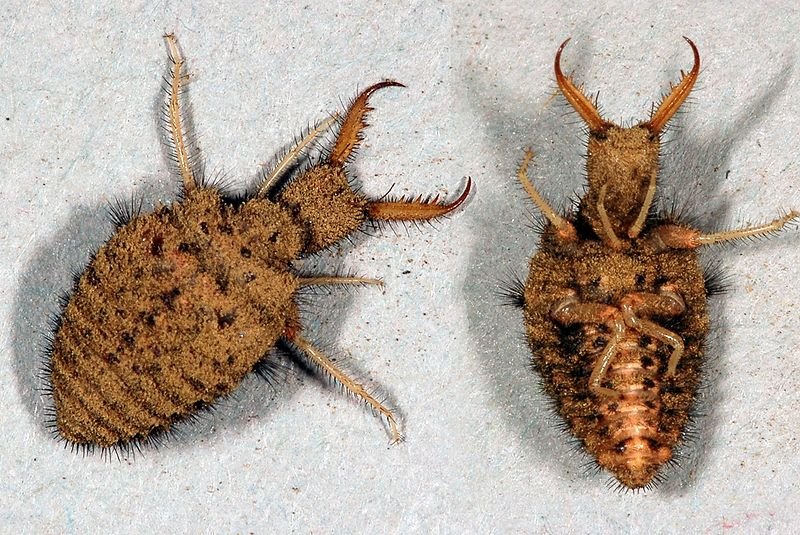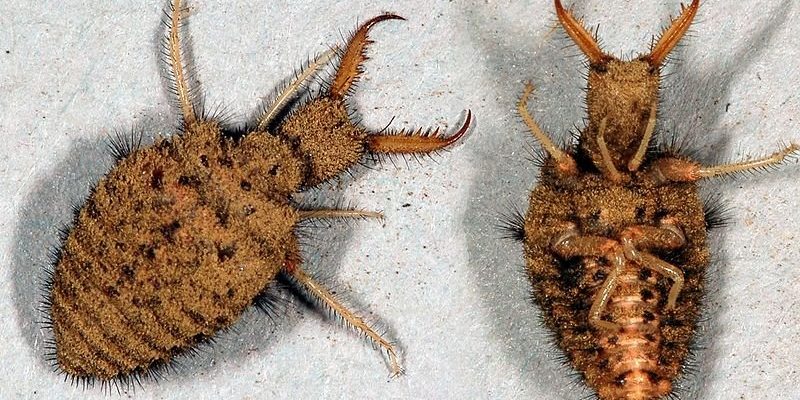
Ant lion larvae live in sandy soil or loose dirt, digging pits and lying in wait for unsuspecting prey. They’re not your average garden worms, which have a completely different set of skills. So, let’s dive deeper into the world of these larvae and compare them to other worm-like species that share their environment, like nematodes and earthworms. You might be surprised at the similarities and differences.
What Are Ant Lion Larvae?
Ant lion larvae are the juvenile stage of a species belonging to the family Myrmeleontidae. They thrive in dry environments, often creating cone-shaped traps in the sand. Picture tiny, deadly sand funnels that look innocent but are actually the perfect hunting grounds. When ants or other small creatures wander into these pits, the larvae quickly spring into action, catching their meal with incredible speed.
The shape of these larvae resembles that of a worm, but they have a far more sophisticated lifestyle. Instead of burrowing through soil, they wait patiently in their traps, camouflaged and ready for action. It’s like having an ambush specialist in your backyard!
The Life Cycle of Ant Lion Larvae
Understanding the life cycle of ant lion larvae gives you a broader picture of their role in the ecosystem. They start as eggs laid in sandy areas. Once they hatch, the larvae emerge and begin their hunt, often living up to a year in this stage. As they mature, their ability to create these traps improves, showcasing their predatory skills.
Once they reach the pupal stage, the larvae dig deep into the ground before transforming into adults. It’s a fascinating metamorphosis that mirrors other insects but comes with its unique flair. Imagine a superhero gradually realizing their powers, going from a stealthy predator to a beautifully winged adult.
Ant Lion Larvae vs. Earthworms
Now, let’s shift our focus to earthworms. They’re known for their contribution to soil health through aeration and nutrient breakdown. Unlike ant lions, earthworms are not predatory. Instead, they consume organic matter and enrich the soil with their castings. Picture a diligent gardener working hard to improve the soil quality—well, that’s the earthworm for you!
While both species inhabit similar environments, their roles couldn’t be more different. Ant lion larvae trap and eat other insects, while earthworms recycle organic waste, enriching the ground. It’s like having a hunter and a gardener in the same space, each playing a vital part in the ecosystem’s balance.
Comparison of Habitat and Behavior
In terms of habitat, both ant lion larvae and earthworms prefer loose, well-draining soil or sandy areas. However, their behaviors are distinct. Ant lions are ambush predators, lying in wait for a meal, while earthworms are more active, burrowing through the soil to find food.
Here’s a quick look at how they stack up:
| Characteristic | Ant Lion Larvae | Earthworms |
|---|---|---|
| Diet | Predatory (catch insects) | Detritivorous (consume organic matter) |
| Habitat | Sandy or loose soil | Moist, rich soil |
| Behavior | Ambush predator | Active burrower |
Ant Lion Larvae vs. Nematodes
Nematodes, or roundworms, are another intriguing comparison. Unlike ant lions, many nematodes can be both beneficial and harmful. Some are predators like the ant lion, while others can be parasites that affect plants or animals. They’re microscopic, so while you won’t see them easily, they play a significant role in many ecosystems.
While ant lion larvae are visible hunters in sandy habitats, nematodes can be found in diverse environments, from soil to freshwater. Their flexibility in habitat gives them an edge, but they lack the dramatic hunting style that makes ant lions so fascinating. Imagine a tiny ninja in the soil versus a skilled hunter with a sand trap—that’s the essence of their rivalry.
Feeding Habits
When it comes to feeding, ant lion larvae actively hunt and trap their food, while nematodes can either hunt down prey or absorb nutrients from their environment. This means both have different strategies for survival. Nematodes can adapt to various niches, whereas ant lion larvae are more specialized.
You might see nematodes flitting around in the moist soil, doing their thing, whereas ant lions are more of a “set it and forget it” kind of hunter. They dig their traps and wait patiently, sometimes for hours, for that unsuspecting ant to fall in. It’s the ultimate game of patience!
The Importance of These Species in Ecosystems
Both ant lions and the worm species they share habitats with are essential to maintaining healthy ecosystems. Each plays a unique role—ant lions help control insect populations, while earthworms aerate and enrich the soil. Nematodes contribute to the nutrient cycle in their own ways.
Healthy gardens and natural areas thrive on this balance. When you look closely, you can see how interconnected these creatures are. If one species flourishes or dwindles, it can impact others. So, the next time you see an ant lion larvae or a worm in your soil, remember they’re part of a much larger picture.
How to Observe These Creatures
If you’re keen on observing ant lion larvae or similar worm species, try spending some time in sandy or moist soil areas. Look for tiny pits in the sand, indicating the presence of ant lions. You can even create your own traps to attract them! Just sprinkle some ants around a pit and watch the fun unfold.
For earthworms, turn over some soil in your garden. You’ll likely find them busy at work. And while nematodes may be harder to spot, knowing they’re there makes you appreciate the tiny world beneath your feet even more.
Final Thoughts
Comparing ant lion larvae to similar worm species is like exploring a hidden world of natural wonder. Each plays a distinct role in their ecosystem, contributing to a balance that supports life. Understanding these differences not only deepens our appreciation for nature but also highlights the intricate connections among different species.
So next time you’re out in the garden, take a moment to consider the tiny lives beneath your feet. Whether it’s the crafty ant lion lurking in the sand or the hardworking earthworm enriching the soil, they’re all part of an incredible story that unfolds right under our noses. Who knew that digging deeper could reveal such fascinating connections?

